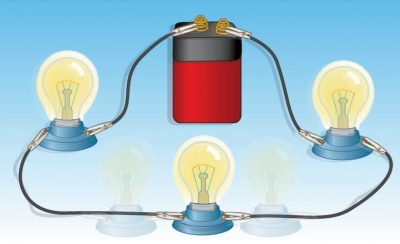
Iron and its alloys, such as steel, are naturally magnetic. They draw other magnetic substances towards them if they are within a certain range, known as the magnetic field. All magnets have a north and south pole, and it is opposite poles that attract each other.
The magnets attractive power relies on the arrangement of its atoms. All the atoms are tiny magnets formed into groups, known as domains. The magnetic strength is increased if the domains are induced to fall into line by the action of another magnet.
A bar of iron placed inside a coil of wire carrying an electric current will be magnetised for as long as the current flows. This is because an electric current has a magnetic field that act at right angles to its direction of flow in the same way as naturally occurring electromagnetic radiation. The strength of the magnet depends on the strength of the current.
These electromagnet can be much stronger than ordinary magnets, and can easily be magnetised or demagnetised by switching the electric current on or off.
Conversely, moving a magnet in and out of a coil of wire will set up an electric current in the wire for as long as the magnet is moving. This was how the first electric generator was produced after the principle (electromagnetic induction) was discovered by an English man, Michael Faraday, in 1831.
Picture Credit : Google

